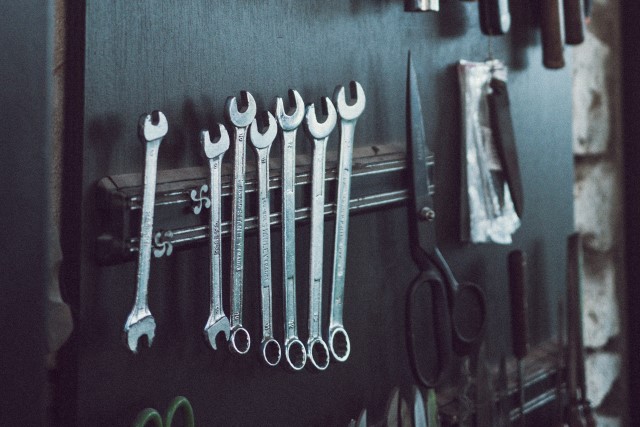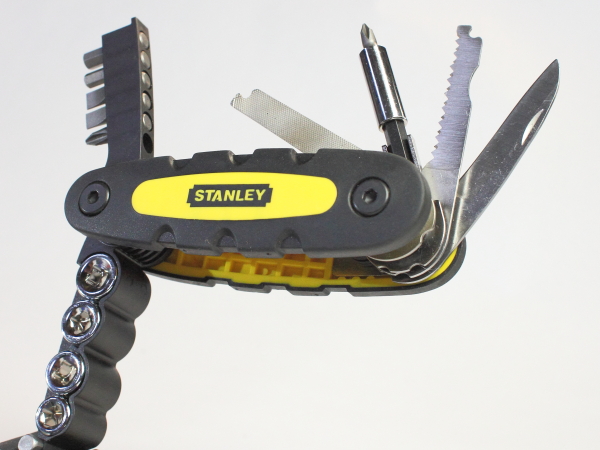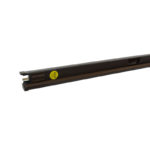Different Types of Spanners – Which Do I Need?

Struggling with nuts? Having the right type of spanner will make your DIY project easier.
A toolbox essential for plumbing, construction or automotive work – the humble spanner is the mechanic’s best friend! Spanners or wrenches are used for tightening or loosening nuts, bolts and fixings. Simply adjust the spanner’s jaws around a rotary fastener’s parallel sides and apply torque (force) to twist. But which spanner should you buy?
A – Z Guide to Spanners & Wrenches
From versatile adjustable wrenches to time-saving ratcheting spanners, there’s a tool for every workshop. Whether you need a strong and tight grip, or want a single tool you can use on different sized nuts and bolts, we’ll find the right spanner for you. We stock everything from sets of combination spanners, to specialist tools like torque wrenches.
Got a spanner or wrench not on our A-Z list? Email sales@shop4fasteners.co.uk and we’ll do our best to help. We have years of experience, so you can trust our advice.
Adjustable Spanner Wrenches
Adjustable spanner wrenches let you adjust the size of the spanner’s jaws, using a worm screw. They’re very versatile – you can use them on different sizes of nuts, bolts and fixings – but they won’t offer as strong a grip as a one-sized spanner. Most adjustable spanners feature a handy size scale, in a choice of imperial or metric measurements.
Combination Spanners
Combination spanners offer the best of both worlds, combining two of the most popular spanner types in a double-ended tool. The open-ended spanner fits around two parallel sides of nuts and bolts, while a ring spanner grips the whole fastener from all sides. Unless you’re working with one size of nut, you may want a combination spanner set!
Flared Nut Open End Wrenches
Flared nut open end wrenches are ideal for loosening nuts and bolts that are attached to tubes. Their flared style grips around fasteners like a ring spanner, but they are open ended to allow tubes to be slipped through. An essential tool or automotive or plumbing work, flared nut open end wrenches are double ended – flip them to maximise the turning arc.
Open End Wrenches
Open end wrenches are one of the most common types of spanner or wrench. The C-shaped, open ended jaws fit around two flat parallel sides of a rotary fastener, allowing it to be turned. The spanner head is usually set at a 15 degree angle, allowing a wider turning arc. Choose a single tool, or buy a set of open end wrenches in different sizes.
Ratcheting Spanners
Ratchet spanners have a ratcheting mechanism. They only turn nuts or bolts one way, so you don’t have to keep adjusting your grip. This can save you time, but you won’t get as strong a grip as a fixed tool. Our combination ratchet spanners feature both an open end and a ring end. You can also buy ratcheting spanner sets in a range of different sizes.
Ring Spanners
Ring spanners feature a looped end instead of an open one, which grips rotary fasteners tightly from all sides. Simply slip the ring around the nut or bolt, and turn to loosen or tighten. Most ring spanners are double ended and come in metric or imperial measurements. Choose a ring spanner set for a choice of sizes, or a ratchet model to work faster.
Torque Wrenches
Torque wrenches are a specialist tool for if a fastener has to be at an exact tightness. They can be adjusted to pre-set torque settings and make a clicking sound when the nut or bolt is tight enough. Torque wrenches may feature a ratcheting mechanism for ease and speed. We stock a high quality range, including robust carry cases for on the move.
What size spanner do I need?
That depends on the size of the fasteners you’re working with. The nut or bolt needs to fit tightly into the jaws of the spanner, otherwise it will keep slipping off when you twist.
If you’re working with a range of fastener sizes, you may want a spanner with adjustable jaws. Adjustable spanner wrenches have a worm screw, so you can use the same tool to tighten or loosen many different nuts and bolts. Finding the right size of spanner doesn’t have to be a chore – browse a range of imperial and metric spanner sizes online.
Never use a spanner that is two big or small for the fastener, as you may end up damaging the fastener, your tool, or even yourself! Use the right tool to ensure safety.
What’s the difference between a spanner and a wrench?
Aren’t they the same? In America, wrench is the standard term for a spanner. So all spanners in the USA are known as “wrenches”, apart from a specialised type with pins around the edge – which is still called a “spanner”. In the UK, the standard term is spanner, apart from a type of adjustable spanner which is confusingly known as a wrench!
Any general tips for using a spanner or wrench?
- Usually, you turn fasteners clockwise to tighten and anti-clockwise to loosen
- Adjustable spanners are handy and convenient, but don’t offer as tight a grip
- Take care of your spanner – wipe it clean with a cloth and store it in a toolbox
- Never use your spanner for hitting, buy a suitable hammer instead
- Sizes refer to the distance across the flat edges of the rotary fastener

